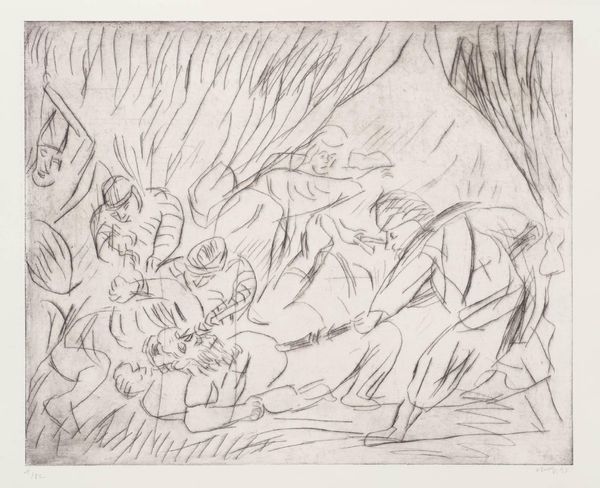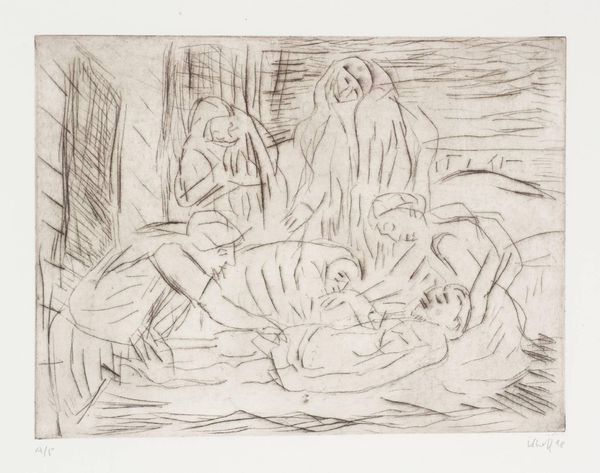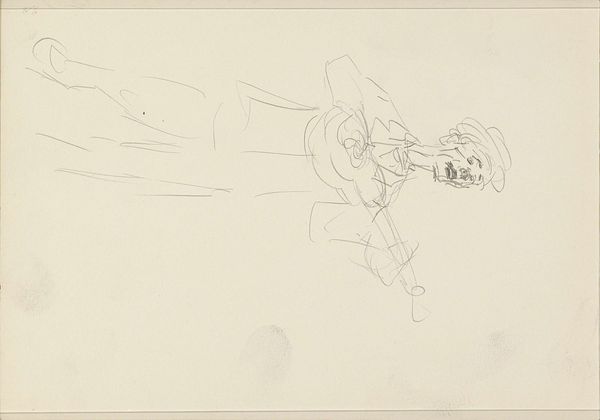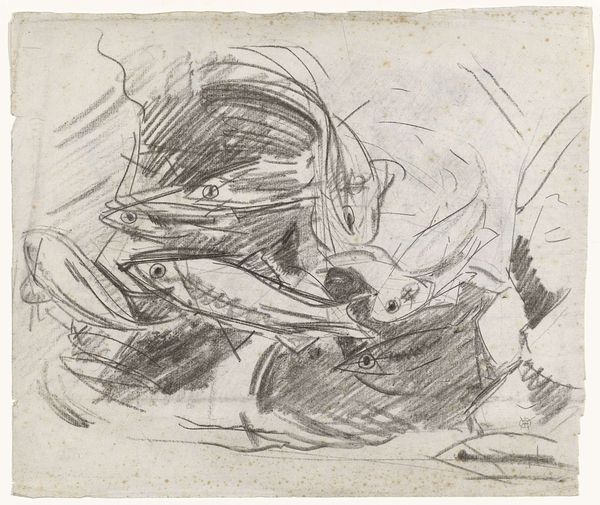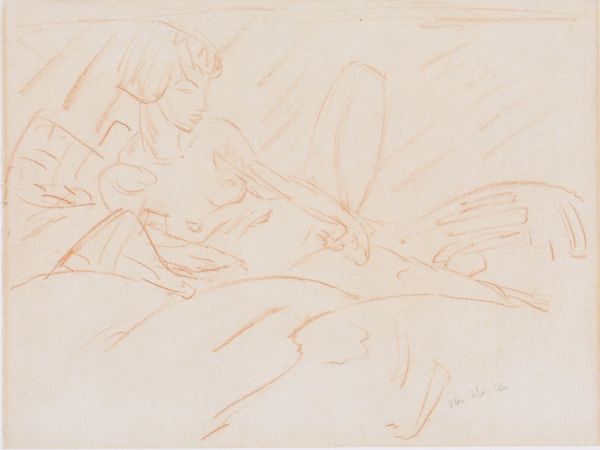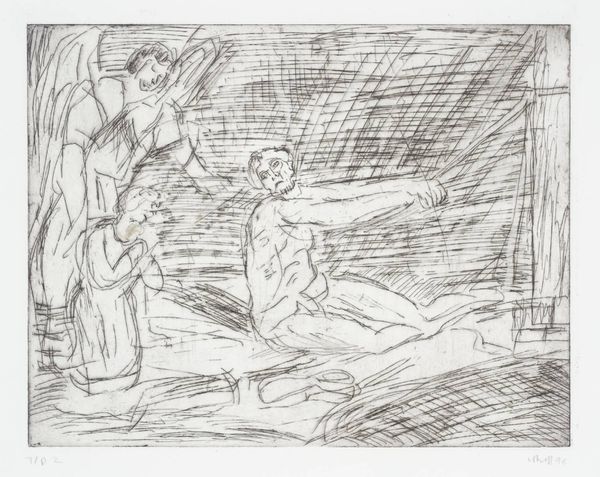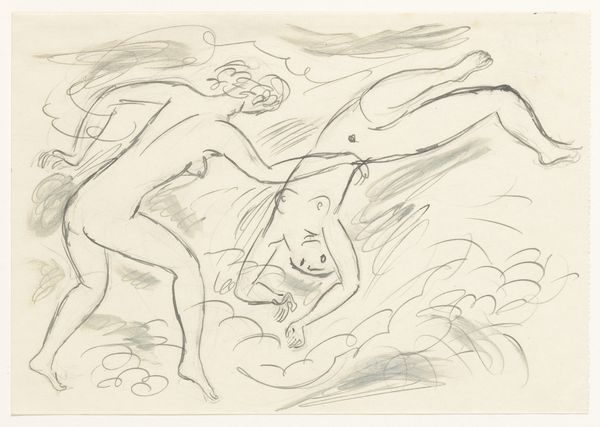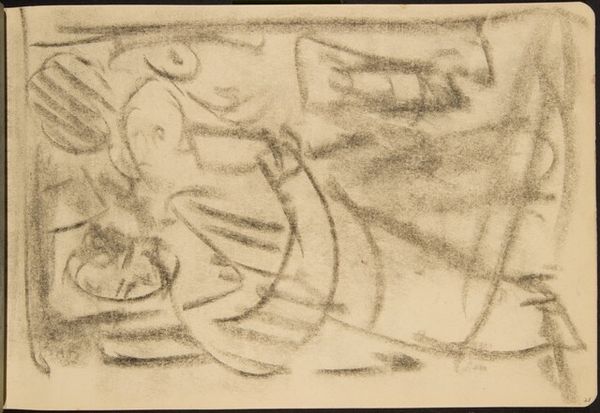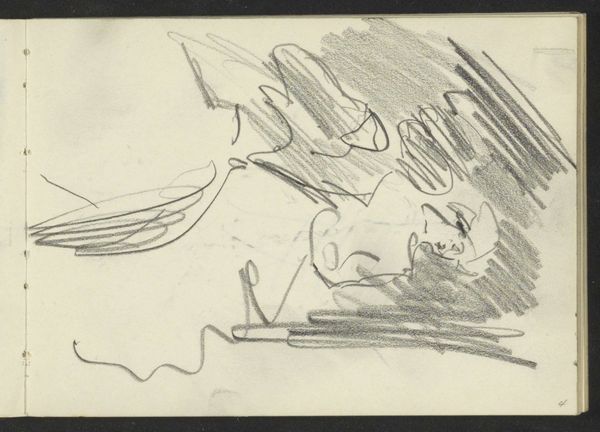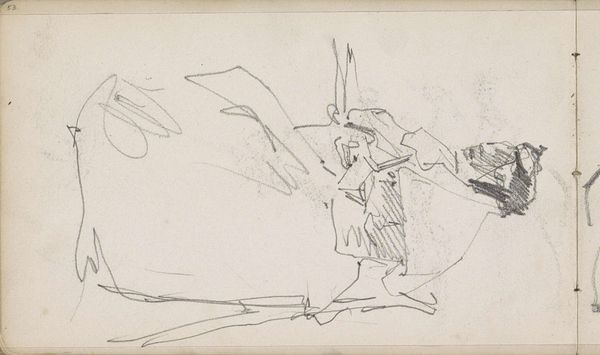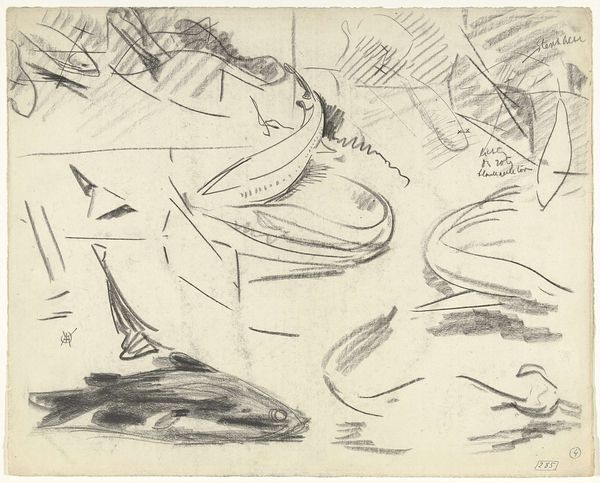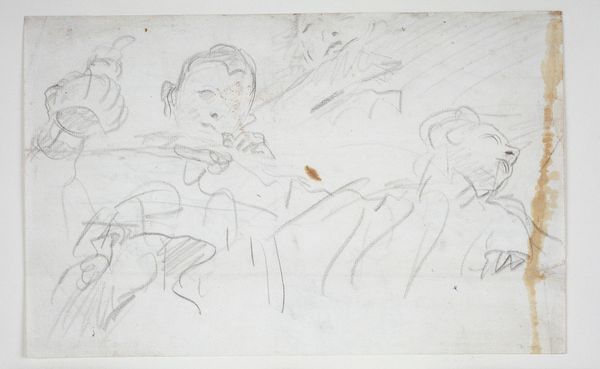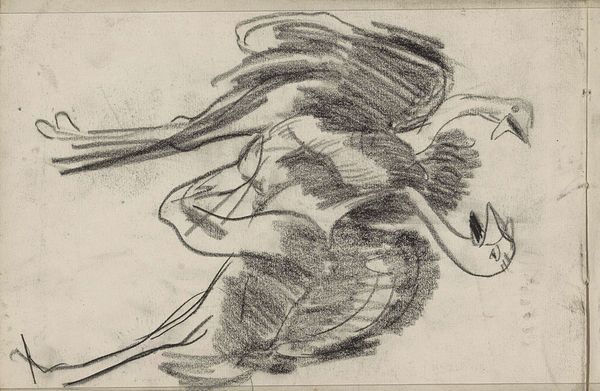
Dimensions: image: 452 x 559 mm
Copyright: © Leon Kossoff | CC-BY-NC-ND 4.0 DEED, Photo: Tate
Curator: This is Leon Kossoff’s etching, "Christ after the Flagellation Contemplated by the Christian Soul (3)", held here at the Tate. Editor: It's stark, almost painfully raw. The thin lines seem to barely contain the subject’s anguish. Curator: Kossoff often explored religious themes, not always for devotional reasons, but as a means to investigate the material of suffering and the body. Editor: And look at the mark-making – the repetitive hatching. It’s almost like a process of flaying, mirroring the violence inflicted on Christ. The labor becomes a form of sympathetic pain. Curator: Yes, and the context is crucial. Consider Kossoff's Jewish heritage and his experiences during World War II. The image can be viewed as a broader statement about human suffering throughout history. Editor: It's fascinating how such a simple medium, lines etched into metal, can carry such weight. It really challenges the preciousness often associated with "fine art." Curator: Absolutely. The piece prompts reflection on the ways society processes trauma, both historically and materially. Editor: I leave here with a greater appreciation for the artist's capacity to engage suffering through his craft.
Comments
tate 8 months ago
⋮
http://www.tate.org.uk/art/artworks/kossoff-christ-after-the-flagellation-contemplated-by-the-christian-soul-3-p11696
Join the conversation
Join millions of artists and users on Artera today and experience the ultimate creative platform.
tate 8 months ago
⋮
This print is one of many etchings executed by Leon Kossoff in response to, and literally in the presence of, oil paintings by old masters; in this case Christ After the Flagellation Contemplated by the Christian Soul, probably 1628-9, by Diego Velazquez (1599-1660), owned by the National Gallery, London. Tate owns three prints by Kossoff after this Velazquez painting (Tate P11694-6). The artist’s ability to explore a number of separate responses while making drawings and prints from a single subject is illustrated in these etchings. This print was never published as an edition; Tate owns the only trial proof.
